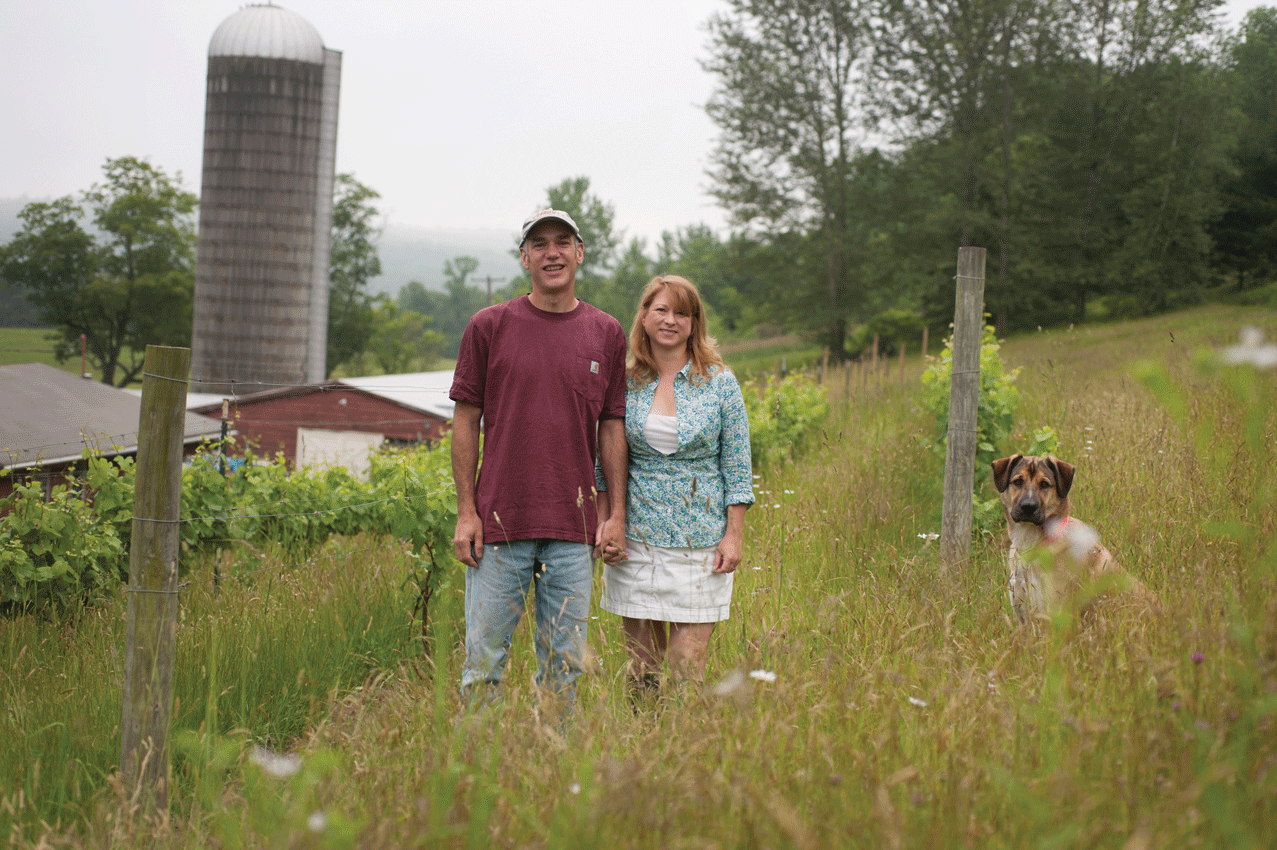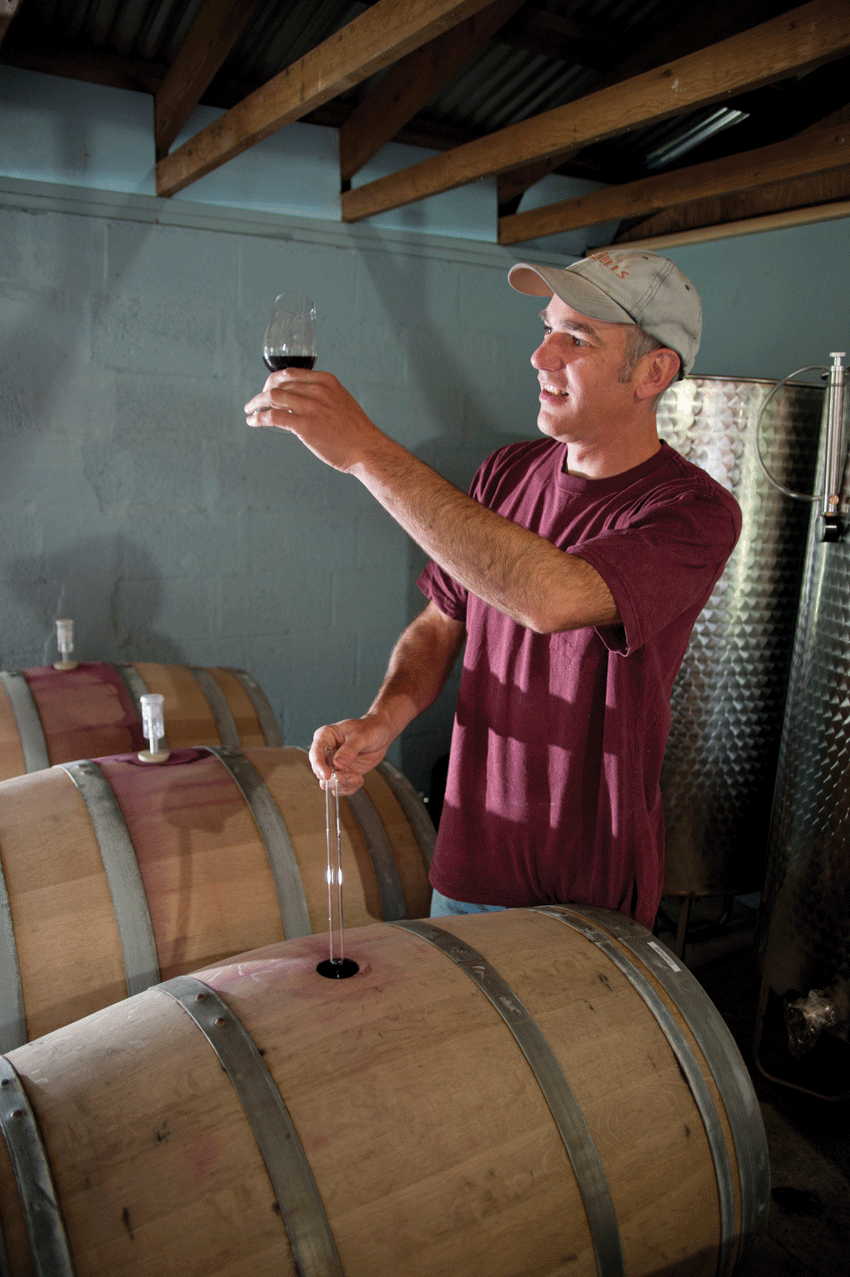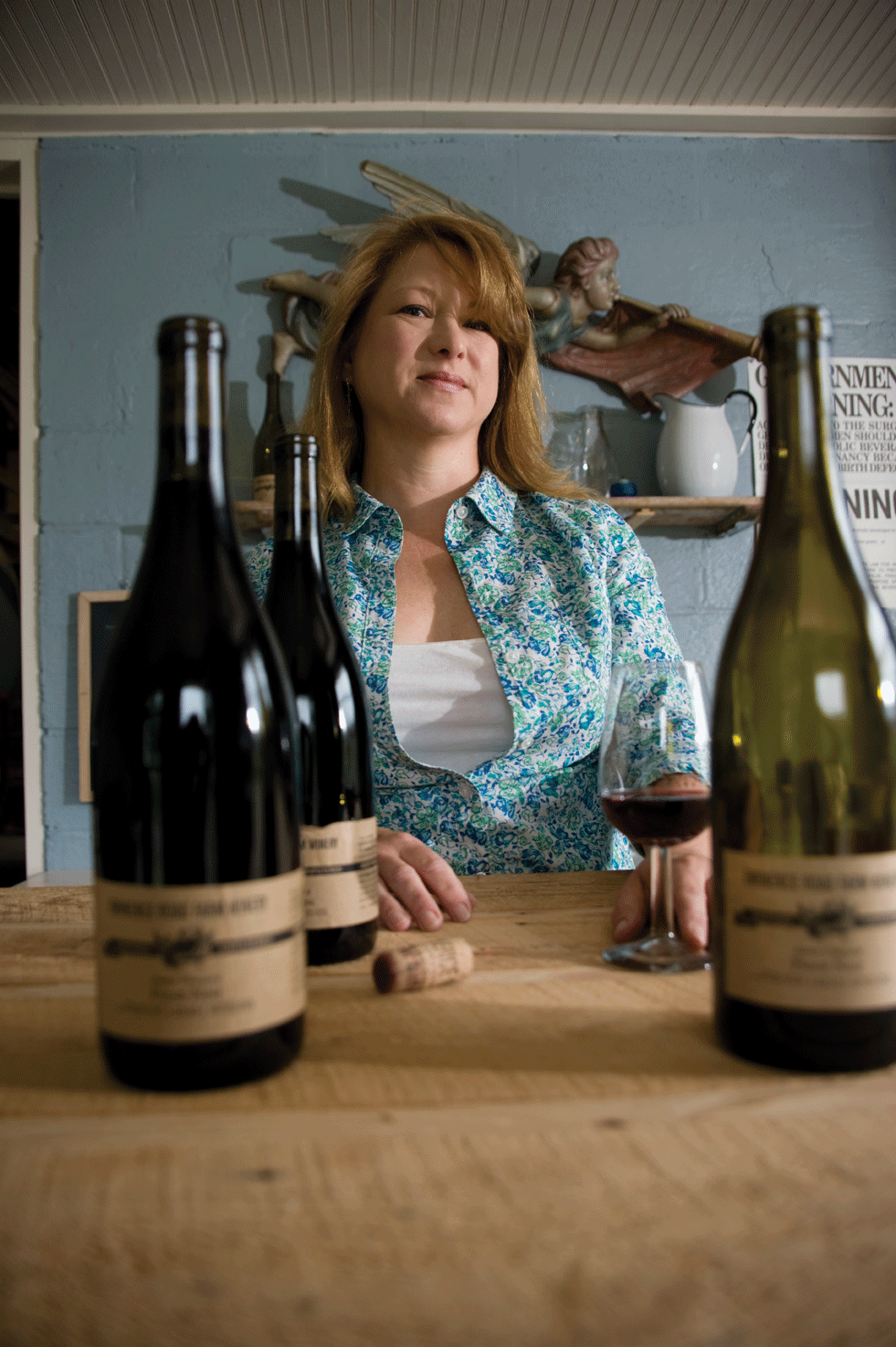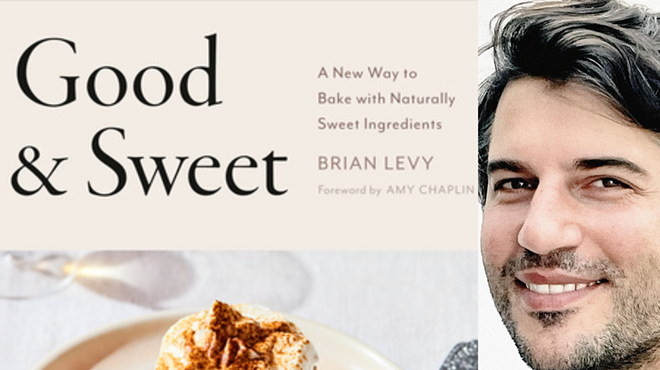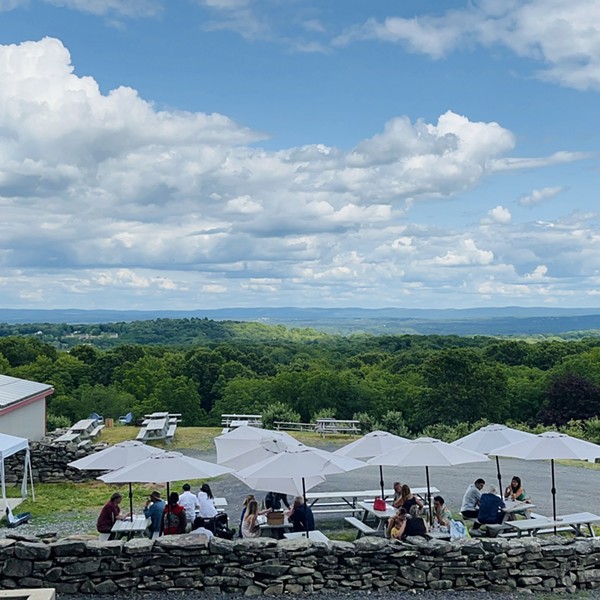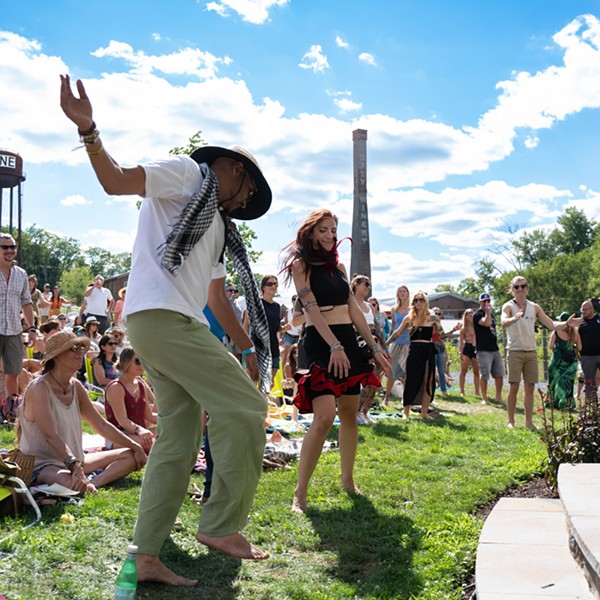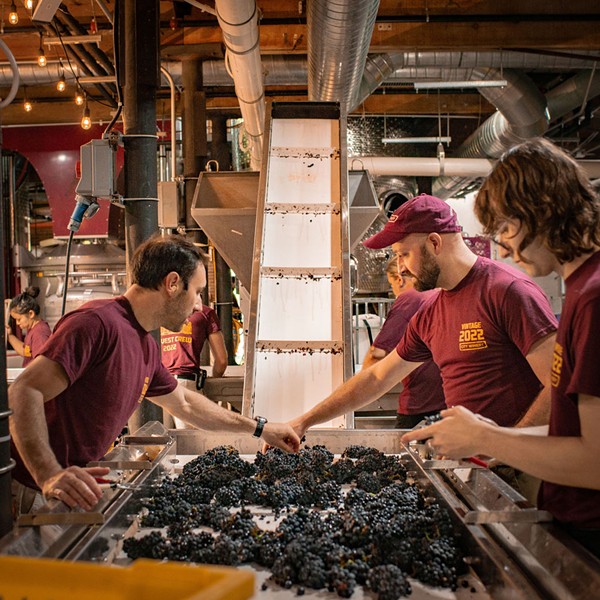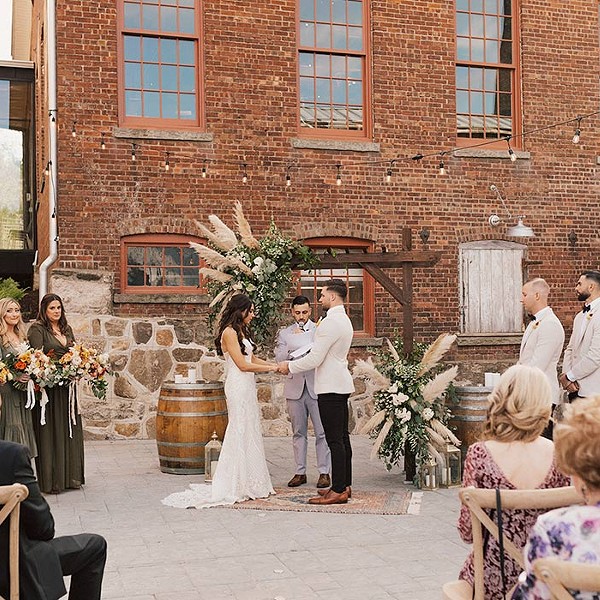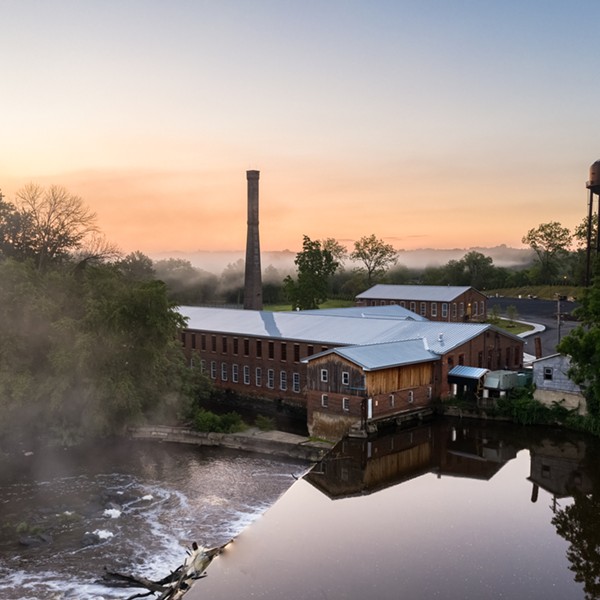Advances in technology are almost exclusively perceived as positive; they increase productivity, speed our travel, extend our lives, and provide us with cool gadgets. In food, however, the most important recent development has been a growing shift away from technologies like genetic modification and honeybee-killing pesticides and toward techniques for production and processing with a lighter touch and a lighter footprint. The wine world is currently experiencing an expanding global movement of natural winemaking: a style of production that uses indigenous yeasts, minimal sulfur, no filtration, and which is often practiced by growers who farm organically or biodynamically. While France is the epicenter of the change, a tiny winery in a remote corner of the Catskills is hard at work making exceptional natural wines.
In 2008, Andrew Scott and Jennifer Clark moved up from New York City to live full time in what had been their weekend retreat, a 19-acre farm in Long Eddy, a hamlet in Sullivan County. Scott, who had been working as an art director for Random House, explains the decision. “One day, I reached a point where I just couldn’t do it anymore, so I quit.” He had been making wine as a hobby for several years, and his thirst to do it for a living would go unslaked no longer. Clark, who holds an MBA, was able to telecommute to her marketing job at Brooks Brothers via a satellite Internet connection for a couple of years so that the transition was financially feasible. Now she covers the business side while he makes the wine. Eminence Road Farm Winery produces wine from seven different varietals, with a total production up from 600 cases last year to 800 planned for the 2012 vintage, and a goal of 1,000 for the following year.
They source their grapes from several vineyards in the Finger Lakes. Scott has spent the last four years working with different growers, and has settled on a few who produce excellent fruit using a minimum of spraying. (It’s virtually impossible to grow grapes organically in this part of the world). They are growing some grapes—pinot noir and a hybrid called Landot noir—on the hill behind the farm. It’s too steep for a tractor, so all the work has to be done by hand, and the harsh winters damage the vines. The grapes are an experiment, and look unlikely to replace the fruit from the more favorable microclimate further north. Scott and Clark bring all the grapes to the winery in their truck and stomp them by foot before piping the juice into the fermenters; all such movements of juice in the winery are gravity powered. They do not remove the stems from the grape bunches. “The stems are where a lot of the character and tannins come from,” Scott explains.
Eminence Road wines are fermented using only indigenous yeast. These wild yeasts, which are visible as the haze on apples and grapes, are more finicky and less aggressive—Scott often has to wait a harrowingly long time for the juice to begin bubbling—but the result has a depth and complexity of flavor that it’s impossible to match. Commercial yeasts are bred for fast fermentation and specific flavor profiles; experienced tasters can often easily determine which strain was used in a given wine. As with many modern additives, this means you taste flavors that were added by the vintner rather than what the soil, grapes, and yeast from a given vineyard have to offer. All of Eminence Road’s wines undergo malolactic fermentation, during which bacteria convert malic acid (commonly found in apples, and very tart) into lactic acid (found in milk) that unsurprisingly has a rounder, more buttery feel in the mouth. It’s a natural process, in keeping with Scott’s approach. “Preventing it requires more intervention than letting it happen,” Scott says.
The use of sulfur goes back at least to Roman times, so it is not controversial per se. Opponents of its use in quantity mostly dislike it for the flavors it imparts, and for the hangovers and headaches that many ascribe to it. Besides the addition of a small amount of sulfur shortly before bottling, Scott’s technique is one of minimal interference throughout the process. “Wineries today have all sorts of tricks: They can add yeast, nutrients, acid, tannins, sugar, water, enzymes, and bacteria, among other things. They all change the flavor.” He believes that the best expression of the terroir comes through when the grapes are allowed to be themselves. He is most emphatic when talking about fining or filtering wine. “It strips the life and character from the wine; it kills it,” Scott explains. Quite literally: Natural wines are still alive. And unfiltered wines age better, with the tiny particles imparting character and enhancing the evolution of the wine in the bottle over time.
The winery is in the large barn—painted an archetypal red with white trim, and complete with a silo—set into the east-facing hillside next to the house. The back wall of the barn is fieldstone, and below grade, so regulating temperature for most of the year is simply a question of opening or closing doors to the outside. During the winter, they use a woodstove in the tasting room. Temperature matters a lot with natural wine; the low sulfur levels and minimal processing make it more fragile than industrially produced products. While getting chilly in the winter is no problem—it just slows down fermentation—heat can spoil the wine very quickly.
His creative background and their aesthetic as a couple is visible in the details: the sign over the door, the wine labels, and the tasting room, which is decorated minimally with a funky couch, a rustic farm table, a vintage chandelier, and old, blue glass power line insulators in a row on a windowsill. The winery interior is spotless, too, though Scott attributes the neatness to having too much time on his hands during the long fermentation. The 2010 cabernet franc from Elizabeth’s Vineyard is the best New York wine I have tasted to date. It smells like Bordeaux (specifically, Saint-Emilion) and tastes like the Loire Valley, which is appropriate given that those two regions produce the finest expressions of the cabernet franc grape. Ripe fruit is well balanced by tart acidity and elegant tannins; it’s drinking well now, and as with all their wines, it has real aging potential. Scott is making two single-vineyard cabernet francs and pinot noirs in 2011, and will make three Pinots this year. A fine 2010 cabernet sauvignon is in bottle and will be released in the fall. He also makes a very drinkable Bordeaux-style blend of cabernet franc, cabernet sauvignon, and merlot from a single vineyard overlooking Seneca Lake called Cuvée Acidalia.
Eminence Road’s chardonnay is unoaked and aged entirely in stainless steel. The 2011 vintage experienced stuck fermentation—what happens when the yeast stops fermenting while there’s still sugar in the wine. Scott added a bit of a neutral commercial yeast and put the wine in thick-walled champagne bottles for a secondary fermentation as a remedy. He’s frank about the yeast: “I can’t afford to lose a whole vintage of chardonnay.” The 101 cases sit, neatly stacked in a squat, white monolith of boxes in the center of the room, while the yeast metabolizes that residual sugar into the fine carbonation that makes a sparkling wine. Though it has not finished, a bottle opened to monitor its progress showed promise (and a strong whiff of marzipan). Scott and Clark are debating what to call the bubbly when it’s ready to label and sell sometime in the fall; “Petulant” is a current contender, a play on pétillant, the French word for lightly fizzy.
Scott is happy with the 2011 Riesling: “It came together perfectly. He hopes to have it on sale by the time this sees print. He has also settled on a vineyard for Gewürztraminer, and will be making a whole barrel of it next year. “Everyone knows the Riesling, but Gewurz is really the grape up there. It’s got so much character.” The 2011, still in the fermenter, is not yet ready for bottling but promises an interesting balance between the classic peachy-lychee fruit flavors and a more complex spiciness and minerality, courtesy of the shale under the thin topsoil in the vineyard. The 2010 pinot noir is still tight, and should be cellared until fall (or decanted before drinking) so that its elegance can unfold. You could do worse than to have a couple of bottles on hand come Thanksgiving. Tasted from barrels, the two 2011 pinot noirs—from Elizabeth’s Vineyard near Seneca Lake and Auten Vineyard near Cayuga—reveal interesting differences between the pieces of land: the essence of terroir. Scott’s description is succinct: “Elizabeth’s has power, and Auten has finesse.”
There are still many challenges. The increase in production means a lot more work since everything, especially bottling, is done by hand. Money is tight. “So far, our wine hasn’t had trouble finding its market.“ Scott says, “Even if it takes a while, the right people always come to it. We’re about two thirds of the way [to profitable], and hope to be able to support a modest lifestyle.” The couple is optimistic, and appear to have adjusted well to their new life; Scott writes a sarcastically entertaining blog recounting their adventures with the winemaking, ice fishing, their dog Lester, and the colossal pumpkins they grow as a hobby. The insights gleaned from visiting the winery, reading the blog, and seeing their personal wine collection reveal the secret behind their excellent products: They’re doing it for themselves.
The winery sells their products at various locations. The winery is open only by appointment.







